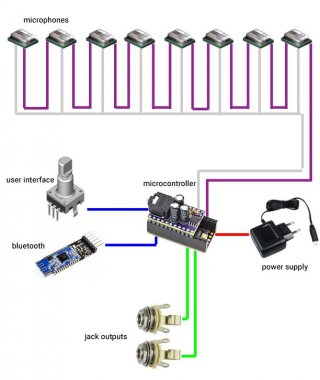------------------------------------
Admin Edit: ICS-52000 microphones do not appear to work well with Teensy at 44100 Hz sample rate.
------------------------------------
I'm designing something that could best be described as a digital mixer with 8 microphones and a stereo output. I came across the TDM protocol and it's potential for reducing a lot of cost and complexity. I came upon the ICS-52000 microphone which allows daisy chaining as shown in the image.
A point of concern is that the microphone is 24 bit, while the teensy audio library (and TDM implementation afaik) is 16 bit. Would it be feasible to rewrite the TDM object to simply drop the insignificant 8 bits? Or are there other solutions?

Admin Edit: ICS-52000 microphones do not appear to work well with Teensy at 44100 Hz sample rate.
------------------------------------
I'm designing something that could best be described as a digital mixer with 8 microphones and a stereo output. I came across the TDM protocol and it's potential for reducing a lot of cost and complexity. I came upon the ICS-52000 microphone which allows daisy chaining as shown in the image.
A point of concern is that the microphone is 24 bit, while the teensy audio library (and TDM implementation afaik) is 16 bit. Would it be feasible to rewrite the TDM object to simply drop the insignificant 8 bits? Or are there other solutions?

Last edited by a moderator:

